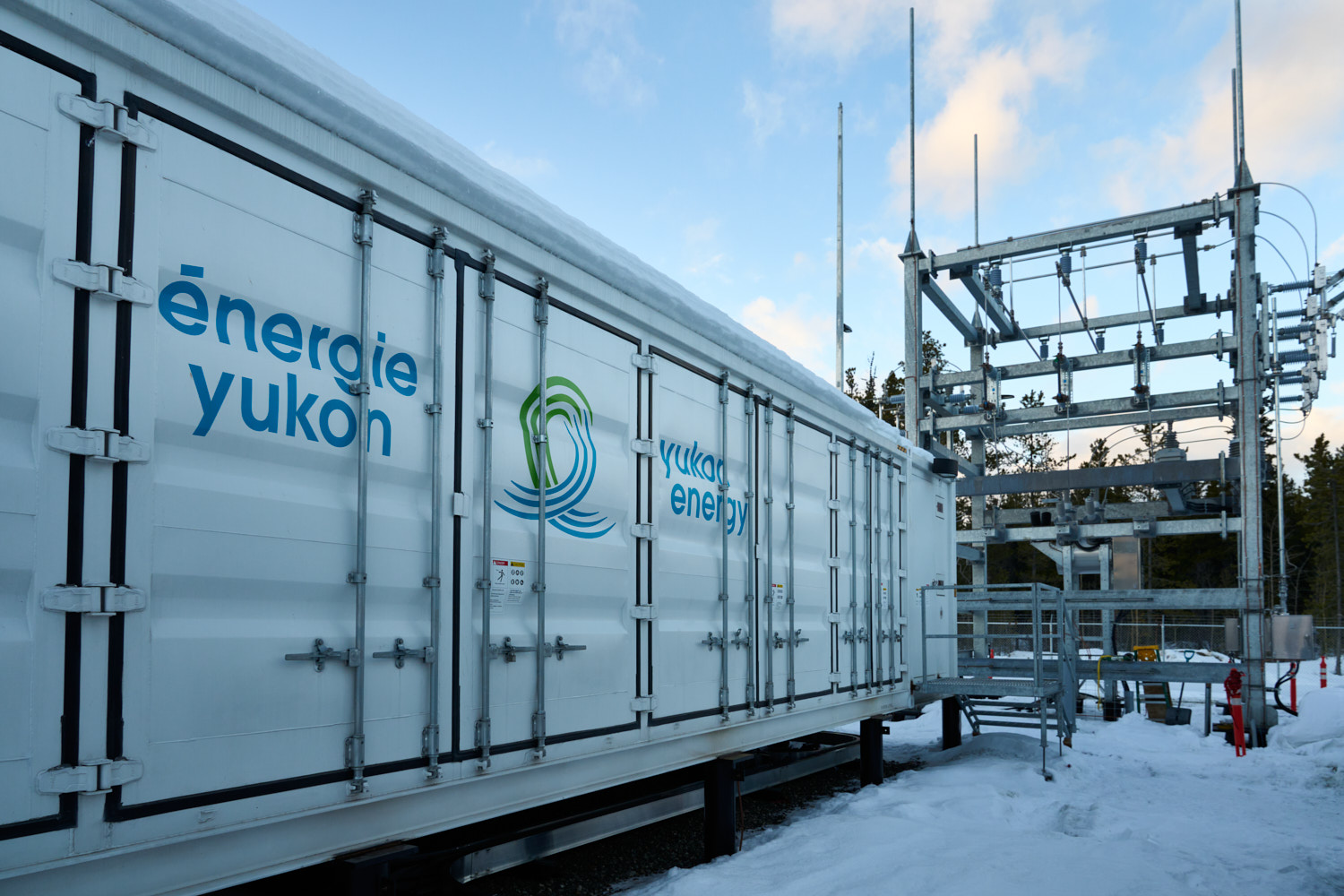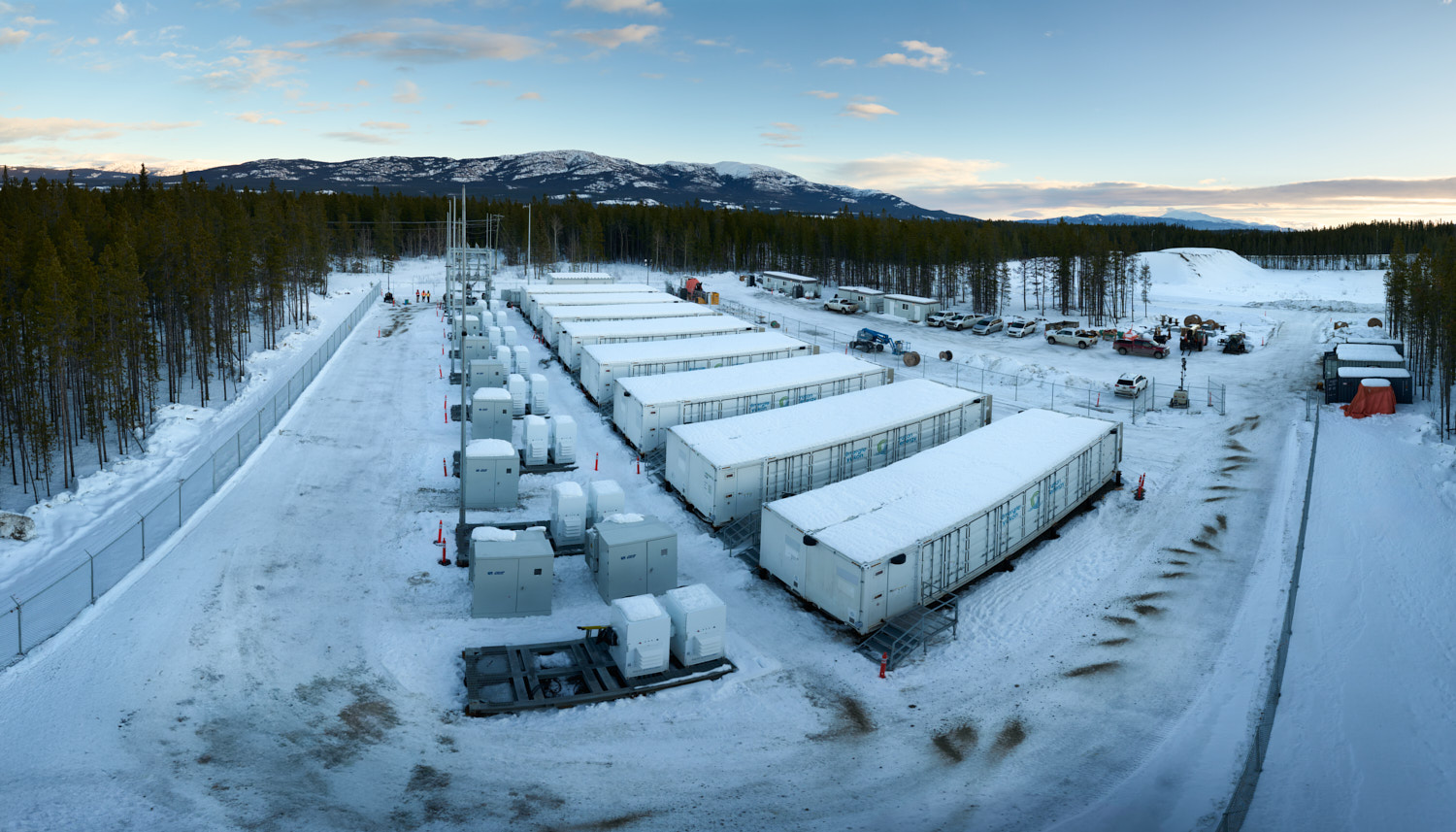- Electricity 101
- Projects and Facilities
- Dawson Diesel Replacement & Relocation Project
- Whitehorse Hydro Facility
- Aishihik Hydro Facility
- Mayo Generating Station Upgrades
- Mayo Hydro Facility
- Liquefied Natural Gas (LNG)
- Diesel Facilities
- Upratings and Refurbishments
- Solar
- Grid-Scale Battery Energy Storage System
- Atlin Hydro Expansion
- Repairs to the Boat Lock
- Whitehorse Thermal Permitting
- Dawson Voltage Conversion
- Faro Diesel Replacement Project
- Whitehorse Power Centres Project
- Whitehorse Diesel Replacement Project
- Energy Future
- Saving Energy
- Standing Offer Program
- Micro-Generation
Grid-Scale Battery Energy Storage System
Progress is underway on the new grid-scale battery energy storage system located in Whitehorse. Once complete, the battery storage system will help Yukon Energy meet peak demands for electricity during the winter and improve reliability. A new transmission line will connect the battery system to the Whitehorse Rapids Generating Station and the Yukon grid. 
The project is being carried out by SunGrid Solutions, a Canadian company that has deployed over 500 megawatt hours of battery storage solutions across North America. The company is teaming up with LG Energy Solution, a world-leading supplier of battery modules, and Valard Construction, a utility construction company with experience building electricity projects in the Yukon.
Working together with First Nations-owned businesses
Yukon Energy acknowledges that the new grid-scale battery energy storage system is built on Kwanlin Dün First Nation Settlement Land and the shared Traditional Territories of the Kwanlin Dün First Nation and Ta’an Kwäch’än Council.
Businesses owned by Kwanlin Dün First Nation and Ta’an Kwäch’än Council have played a significant role in the development of the battery system including investment, procurement and contracting opportunities as part of the overall project. Yukon Energy signed a 25-year lease agreement with Da Dan Developments – a subsidiary of Kwanlin Dün First Nation’s development corporation, Chu Níikwän Development Corporation – for the land needed for the battery system. Ta’an Kwäch’än Council-owned businesses worked on site preparation activities while Kwanlin Dün First Nation-owned businesses helped to build the access road to the site.
The battery energy storage system will be the largest of its kind in Northern Canada.
This project is funded in part by the Government of Canada.

